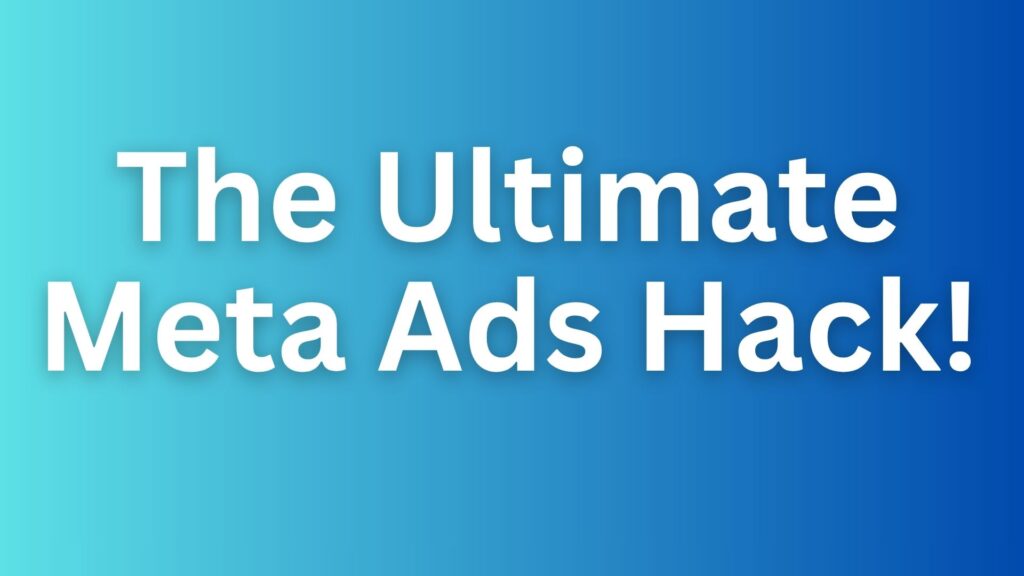
In today’s crowded social media landscape, users scroll past hundreds of posts every day. If your ad doesn’t capture their attention immediately, it risks being ignored completely. On platforms like Facebook and Instagram, Meta Ads need more than just good targeting—they require creative visuals, compelling copy, and a clear strategy to make users stop scrolling, engage, and take action.
Designing scroll-stopping Meta Ads creatives is both an art and a science. It combines psychology, design principles, copywriting, and testing. Done right, your ads can improve click-through rates, reduce costs, and generate higher ROI. In this guide, we’ll walk you through everything you need to create Meta Ads creatives that truly convert.
Why Scroll-Stopping Creatives Are Essential
Many marketers make the mistake of focusing solely on targeting, audience segmentation, or ad budget. While these elements are important, the creative is where campaigns win or fail. A user’s decision to engage happens in seconds. If your ad doesn’t stand out visually or emotionally, all your targeting efforts and ad spend can go to waste.
Scroll-stopping creatives are crucial because they:
- Grab attention immediately, preventing users from scrolling past.
- Increase engagement in the form of likes, shares, comments, and clicks.
- Improve cost efficiency, as higher engagement often leads to lower cost per click or conversion.
- Enhance ROI, making every ad dollar more impactful.
Without a strong creative, even the best campaign strategies cannot succeed.
The Core Elements of Scroll-Stopping Meta Ads
Eye-Catching Visuals
Your visual is the first thing a user notices, and it plays the biggest role in whether your ad stops the scroll. Effective visuals are: bold, high-quality, and immediately understandable. Bright colors and strong contrasts make your ad stand out in a busy feed, while simple, uncluttered designs communicate your message quickly.
Relevance is key. The image or video should clearly relate to the product, service, or message you’re promoting. For example, a fitness brand could show a person mid-jump or lifting weights against a bold, energetic background. This instantly communicates action, energy, and results, making users pause to look closer.
Strong, Clear Messaging
Your headline and ad copy should complement the visual, not compete with it. On Meta Ads, less is often more. Users scroll quickly, so your message needs to be clear, concise, and compelling. Focus on one primary idea and communicate it in a way that speaks directly to the user’s needs or desires.
For example, instead of a generic statement like, “Our software has many great features to help your business grow,” try: “Grow your business 3x faster—Start Free Today.” This version is actionable, specific, and hooks the user immediately. A strong opening line, curiosity-inducing phrases, or bold claims can help make your ad more effective.
Evoke Emotion
Humans make decisions based on emotion more than logic, and your Meta Ads should tap into this instinct. Ads that trigger emotional responses—whether it’s excitement, curiosity, joy, or fear of missing out—tend to perform better.
For example, a travel brand might show a family enjoying a sunset on the beach with a caption like, “Make memories that last a lifetime.” This evokes a feeling of happiness and desire, encouraging users to engage with the ad. Even subtle cues, like facial expressions or relatable situations, can significantly boost performance.
Use Motion and Video
Motion naturally attracts attention in a crowded social feed. Video content on Meta often outperforms static images because it immediately draws the eye and keeps users engaged longer. Short videos, animations, or even subtle motion effects can make your ad feel more dynamic.
Best practices include keeping videos short (15–30 seconds), capturing attention in the first 3 seconds, and including captions since many users watch without sound. Subtle animations or transitions can guide the viewer’s eye and emphasize key messages. Even a small zoom-in effect or moving background can turn a passive scroll into active engagement.
Include a Clear Call-to-Action (CTA)
Even the most eye-catching ad is ineffective if it doesn’t lead to action. A strong CTA tells users exactly what to do next. Keep it short, clear, and aligned with your campaign goal. Phrases like “Shop Now,” “Learn More,” or “Sign Up Today” work best. Adding urgency or scarcity—like “Limited Time Offer” or “Only 5 Seats Left”—can increase conversions significantly.
Design Principles for High-Performing Meta Ads
Designing scroll-stopping creatives isn’t just about flashy visuals—it’s about following principles that maximize clarity, consistency, and impact. Here’s what to focus on:
- Keep it Simple: Focus on one main idea per ad. Avoid overloading your visuals or copy with too much information.
- Brand Consistency: Use colors, fonts, and design elements that align with your brand. Familiarity builds trust and recognition.
- Use Faces: Humans are naturally drawn to faces. Featuring real people performing relatable actions can increase engagement.
- Mobile-First Design: Over 80% of users access Meta Ads via mobile devices. Make sure your visuals, text, and buttons are easy to read and interact with on small screens.
- Test Multiple Variations: Even small differences in color, headline, or CTA placement can dramatically affect results. A/B testing helps identify what resonates with your audience.
Common Mistakes That Kill Engagement
Even experienced marketers often make mistakes that silently reduce the effectiveness of their campaigns. One of the most common errors is using generic stock photos. While convenient, these images often feel impersonal and fail to connect with users. People scroll past visuals that look like every other ad they’ve seen. Using authentic photos, real-life moments, or original designs helps your ad stand out and feel trustworthy.
Another common mistake is overcrowding visuals with too much text. Many marketers assume that including more information will improve engagement, but the opposite is true. Cluttered images are confusing and fail to communicate the message quickly. Instead, let the visuals tell the story and use concise copy to support it.
Ignoring mobile optimization is another costly oversight. Ads that look good on a desktop may become unreadable on smaller screens. Small fonts, cramped layouts, or buttons that are too tiny to tap can ruin performance. Designing mobile-first ensures that your ad is visually appealing and functional across all devices.
Finally, skipping A/B testing can prevent you from identifying what truly works. Small variations in color, headline, imagery, or CTA can have a significant impact on performance. By testing multiple creative versions, you can pinpoint what resonates most with your audience and optimize your campaigns accordingly.
Tools to Create Scroll-Stopping Meta Ads
Creating high-quality Meta Ads doesn’t require complex software, but using the right tools makes the process faster and more effective. Some top tools include:
- Canva: Ideal for quick, professional-looking designs with ready-made templates optimized for Meta Ads.
- Adobe Photoshop & Illustrator: Perfect for advanced designers who want full control over visuals.
- Meta Creative Studio: Helps test multiple ad variations and analyze performance directly.
- Lumen5 or InVideo: Excellent for creating engaging video ads without complicated editing skills.
Using the right tools, combined with strong creative principles, allows you to produce high-quality ads consistently.
Testing and Optimization
Even the most visually stunning ad can fail without proper testing. Always launch multiple variations and monitor performance metrics such as click-through rate, engagement, reach, and conversions. Analyze which creatives perform best and scale them while tweaking underperformers. Continuous testing ensures that your campaigns remain effective, relevant, and cost-efficient.
Pro Tips for Truly Scroll-Stopping Ads
- Use contrasting colors to make your ad stand out in the feed.
- Incorporate user-generated content to build trust and authenticity.
- Leverage social proof by showcasing reviews, testimonials, or endorsements.
- Tell mini-stories in your ads to create relatability and emotional connection.
- Focus on benefits, not just features, showing how your product or service improves the user’s life.
Conclusion
Creating scroll-stopping Meta Ads creatives isn’t about luck; it’s about strategy, design, and continuous improvement. By combining eye-catching visuals, concise messaging, emotional triggers, motion, and clear CTAs, you can capture attention, engage your audience, and drive conversions.
Remember, even the best ad requires testing and optimization. Study what works, iterate constantly, and refine your campaigns for maximum impact. With a strong creative strategy, your Meta Ads can truly stop the scroll, generate engagement, and deliver measurable results.
